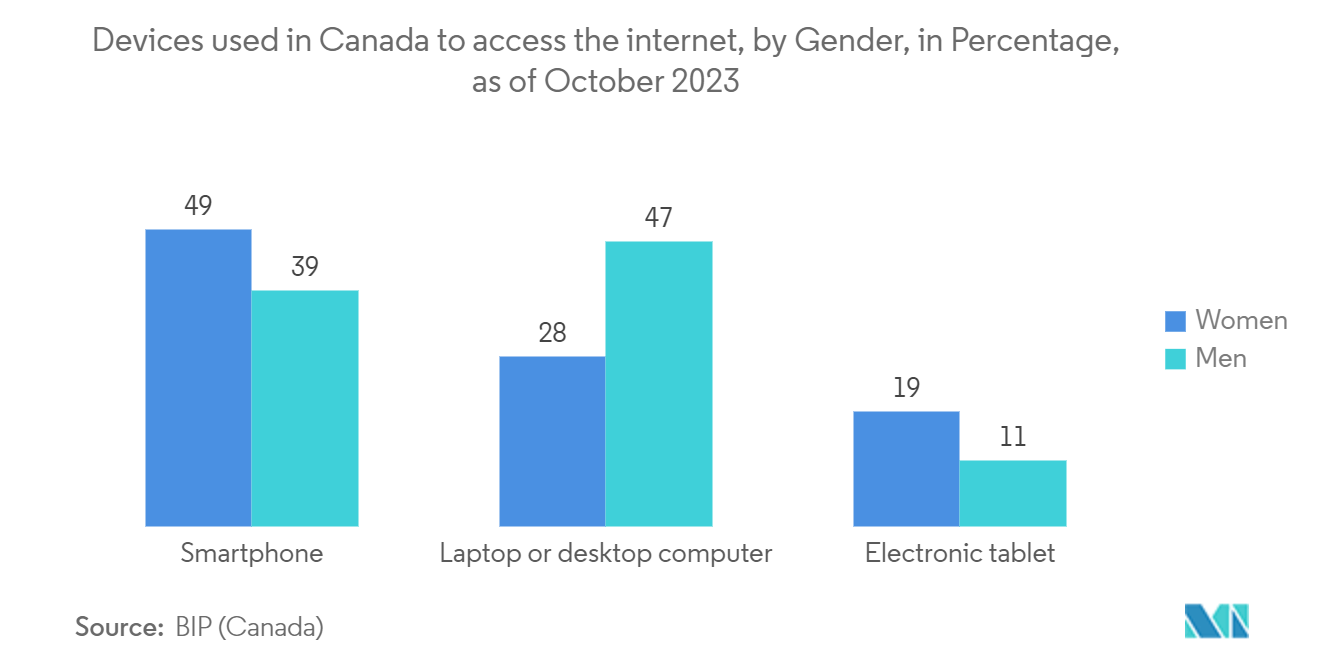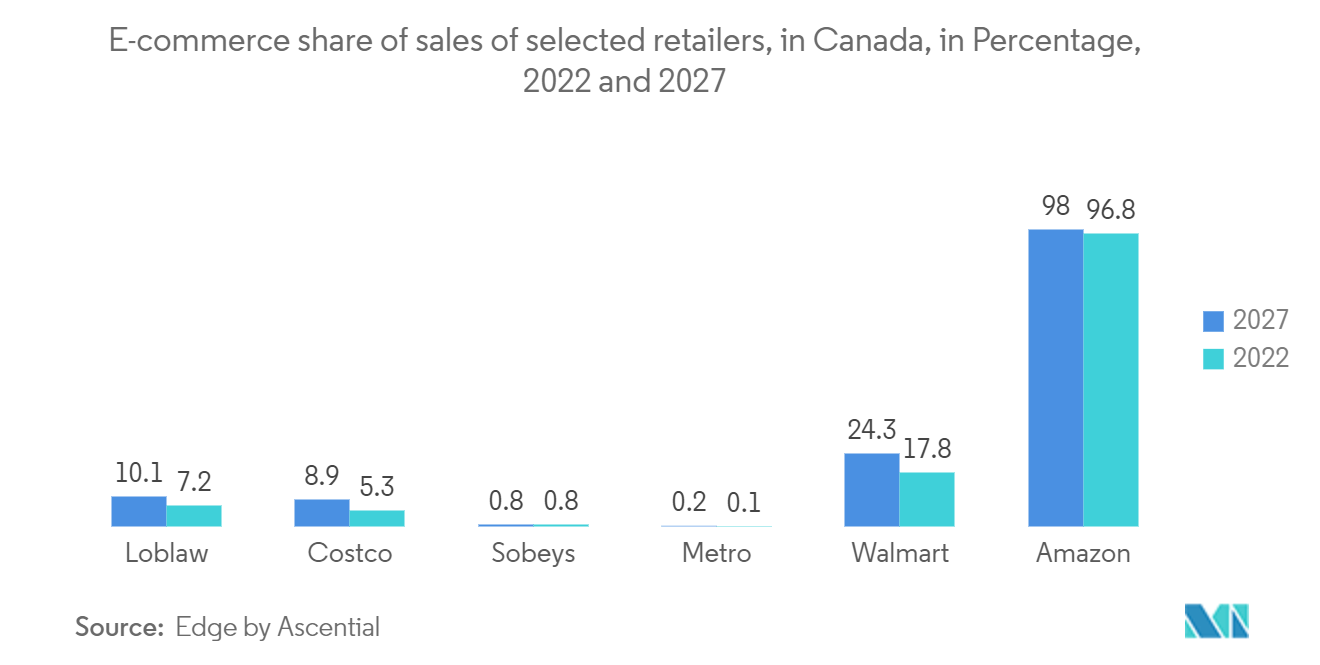Market Trends of Canada E-commerce Industry
The Number of Internet Users is Increasing in Canada
- Canadian consumers are increasingly relying on the Internet for purchases, with online sales outpacing traditional retail transactions in recent years. Most retail businesses in Canada have integrated internet-based platforms, often incorporating wireless technologies, to bolster their interactions with companies and consumers. Moreover, manufacturing entities and governmental bodies are shifting to the Internet for procurement, particularly for smaller, regular orders. Around 94.3% of Canadians in 2023 had consistent internet access.
- Internet access provides an essential link to the rest of the world for residents in remote communities in Northern Canada, but delivering high-speed services remains costly and complex. According to reports published by the International Trade Administration in 2023, in 2022, Canada boasted a staggering 27 million e-commerce users, representing 75% of the nation's population. Projections indicate this figure is set to climb to 77.6% by 2025. This growing inclination toward e-commerce is driving the overall market.
- The Canadian e-commerce market is similar to that of the United States, and it shares some of the same trends as retailers in the South. Hybrid purchases, such as "click and collect" and "omnichannel," where consumers order products online and pick them up from a brick-and-mortar store, are shaping the Canadian e-commerce market. The Canadian e-commerce market involves social media usage because the return on investment by using social media is constantly improving, and retailers are increasingly spending significantly on social media ads.
- In Canada, there are several payment methods in internet shopping, the most common of which are credit card-based, such as Interac Online, MasterPass, and PayPal. Some vendors also offer the option of prepaid cards or prepaid vouchers. Also, in terms of consumer preferences, young Canadians are more willing to make mobile purchases and are more receptive to mobile advertisements. As per the report by BIP (Canada), a smartphone is the most used device for internet access in Canada among people. Around 49% of women and 39% of men use smartphones to access the Internet.
- Video advertising is also preferred in Canada. According to Com Score, mobile commerce (m-commerce) is rising, owing to the increasing mobile connectivity of smartphones and tablets. Digital advertising surpassed TV advertising revenues and is poised to become Canada's preferred advertising medium.

The B2C E-commerce Segment is Growing
- The business-to-consumer e-commerce market in Canada has experienced significant growth over recent years. The market is witnessing significant shifts and expansions as more Canadians turn to online shopping for convenience, variety, and competitive pricing.
- Canada's B2C e-commerce market has seen a rapid increase in online shoppers and the overall sales volume. According to Statistics Canada, e-commerce sales are continuously growing in the country. This surge is expected to be sustained in the coming years as consumers become accustomed to the convenience of online shopping. The electronics segment is the leading product category, followed by fashion and furniture. Around 59% of Canadian shoppers use credit cards online, and 20% use PayPal. Digital wallets are steadily increasing and are estimated to account for 27% of online payments by 2025.
- The growth of e-commerce can be attributed to the volume of purchases and the amount of goods and services Canadians purchase. The largest share of goods purchased by Canadians from US merchants include apparel and accessories, followed by books, music, and videos, consumer electronics, toys, hobbies, and games, health and beauty products, footwear, jewelry, household goods, sporting goods, DIY and garden supplies, and groceries.
- There are several companies in the market catering to the B2C segment. Of these, Amazon is expected to generate 98% of its sales in Canada through e-commerce channels in 2027, an increase from 96.8% in 2022. Such increasing sales indicate the growth of e-commerce retailers in Canada. The market is expected to continue to grow over the coming years.


